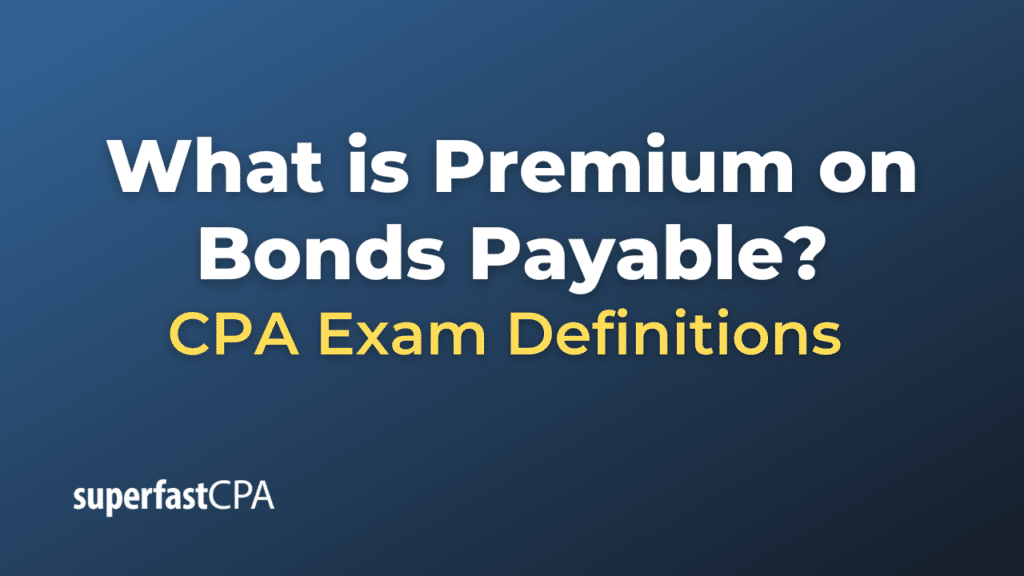Premium on Bonds Payable
“Premium on Bonds Payable” is a concept in financial accounting that arises when the selling price of a bond is higher than its face value. This typically happens when the coupon rate (the interest rate stated on the bond) is higher than the prevailing market interest rates at the time of issue.
When a company issues bonds at a premium, it means that investors are willing to pay more for the bond upfront because they will receive higher interest payments over the life of the bond compared to other similar risk profile investments available in the market.
The premium on bonds payable is considered a liability for the issuing company and is reported on the balance sheet under the long-term liabilities section, along with the bonds payable. Over the life of the bond, this premium is amortized, and it reduces the amount of interest expense reported in the income statement.
Let’s consider a simple example. If a company issues a $1,000,000 bond with a 10-year maturity at a 2% premium, it means that the investors have paid $1,020,000 ($1,000,000 + 2% of $1,000,000) for the bonds. The additional $20,000 is the premium on bonds payable. Over the life of the bond, this $20,000 would be amortized and reduce the interest expense that the company records.
Example of Premium on Bonds Payable
Let’s look at a specific example to illustrate how a premium on bonds payable works and how it is accounted for.
Suppose a company, BizCorp, issues $100,000 worth of 10-year bonds with a stated interest (coupon) rate of 6%. However, at the time BizCorp issues these bonds, the market interest rate for similar bonds is 5%. Since BizCorp’s bonds offer a higher interest rate than what is currently available on the market, investors are willing to pay more for these bonds.
Suppose investors pay 101% of face value, or $101,000, for these bonds. The extra $1,000 is considered a premium on the bonds payable and is initially recorded as a credit in the Premium on Bonds Payable account.
Here is the journal entry for the bond issuance:
Debit: Cash $101,000
Credit: Bonds Payable $100,000
Credit: Premium on Bonds Payable $1,000
Over the life of the bond, BizCorp will amortize the premium, which means it will gradually reduce the Premium on Bonds Payable account balance and record it as a reduction in interest expense.
Suppose BizCorp uses straight-line amortization, which simply divides the total premium by the number of interest periods. If interest is paid annually, there are 10 periods, and the premium is amortized at $100 per year ($1,000 premium ÷ 10 years).
Each year when BizCorp pays interest, it will also record the amortization of the premium:
Debit: Interest Expense $5,900 (6% of $100,000 – $100 premium amortization)
Debit: Premium on Bonds Payable $100
Credit: Cash $6,000
By the end of the 10-year period, the $1,000 premium on bonds payable will have been fully amortized. The bond will be reported at its face amount of $100,000 on the balance sheet, and it will be fully paid off by BizCorp to the bondholders.













